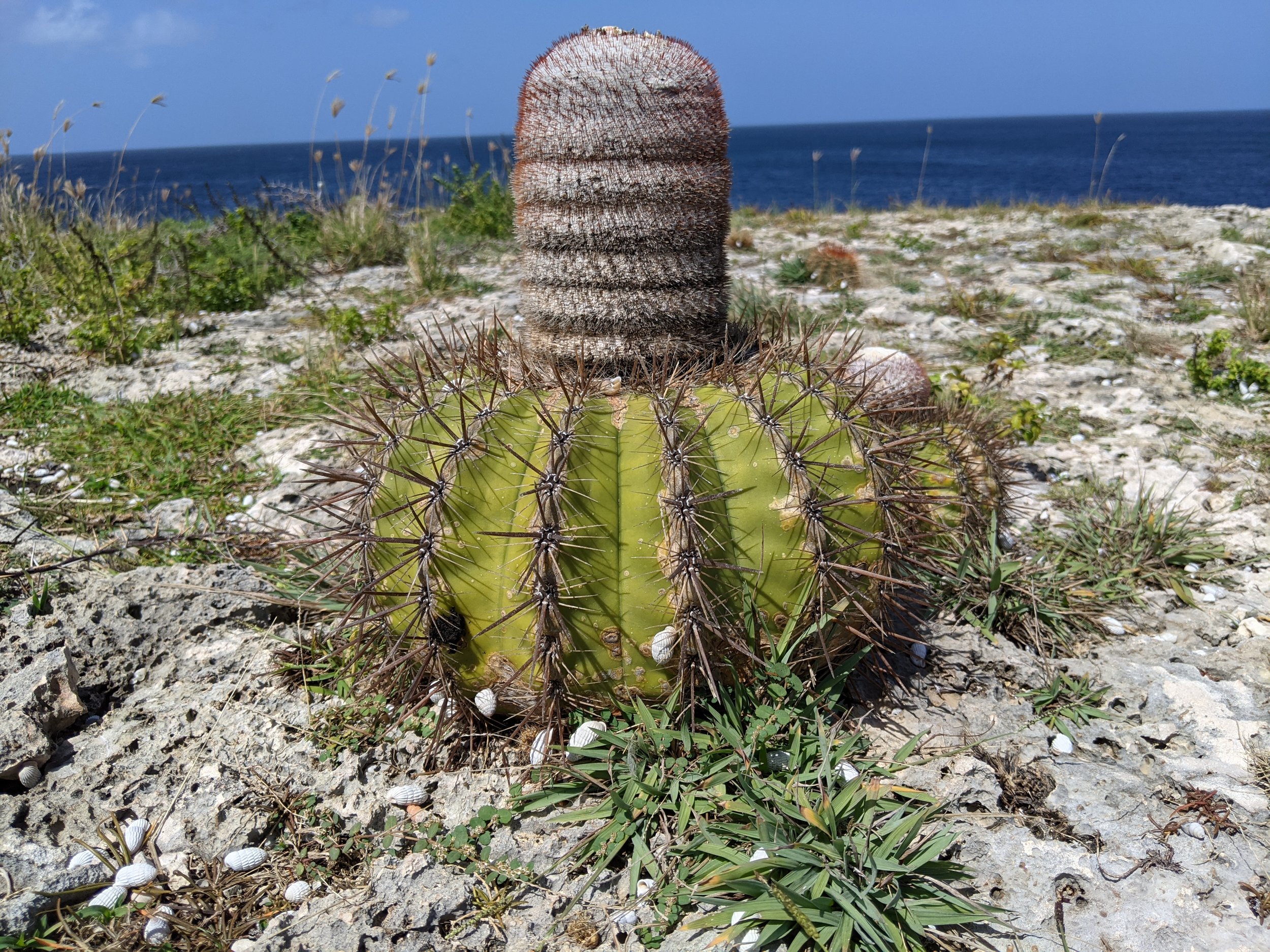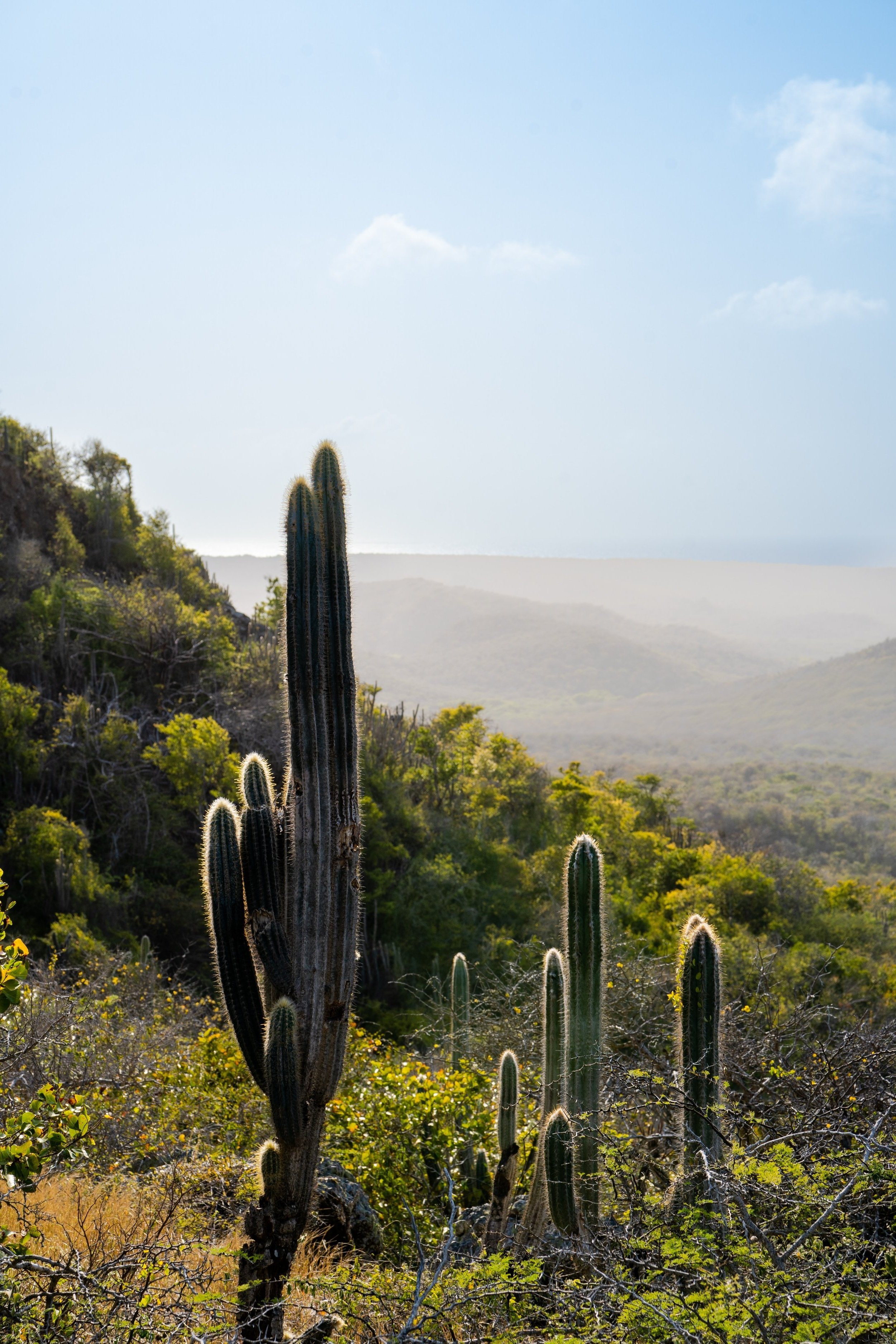Cacti
Melon Cactus - Milon di Seru or Bolcactus has a cylindrical stem that can reach up to 10 cm in height and 5 cm in diameter. The stem is covered with spines, and the plant produces yellow flowers in the spring and summer. Milon di Seru has cultural significance for the indigenous people of Curaçao, who have used the plant for medicinal purposes. The plant is believed to have a variety of healing properties, including the ability to treat stomach aches and skin conditions. Cliff Villa Peninsula is a Milon di Seru reserve.
The Melon Cactus is a slow-growing cactus, and some species can take up to 10 years to reach maturity. The fruit of the Melon Cactus is edible and is used in traditional Curacao medicine to treat a variety of ailments, including digestive problems and fever.Easter Cactus - This cactus is named for its blooming period, which often coincides with the Easter holiday. It produces large, showy blooms in shades of pink, red, and purple.
Old Man Cactus - This cactus is known for its shaggy appearance, with long, white hairs covering its stem. It is also known for its ability to withstand high temperatures, making it a popular choice for landscaping in hot, arid climates.
Saguaro Cactus - This iconic cactus is native to the Sonoran Desert and is a symbol of the American Southwest. It can grow up to 50 feet tall and is known for its large, white blooms that bloom at night.
Snake Cactus - This cactus is named for its slender, cylindrical stems that resemble snakes. It is also known for its sharp, needle-like spines that deter predators.
Prickly Pear Cactus - This cactus is known for its edible fruit and its ability to store water in its stems, making it an important food source for desert animals.

